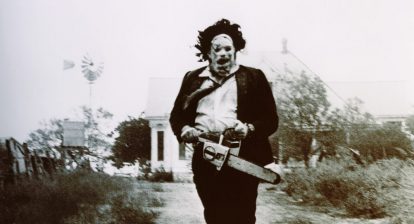Saw is a franchise infamous for its use of torturous traps. Only so many people throughout the franchise thus far have completed the tasks put before them, won the game, and lived. Even so, there are a few times where it looks like the traps should have been easy-ish to escape. With the release of the Saw franchise’s newest movie, Spiral, we are looking back at five traps from past movies that should have been easy to overcome. Spoilers for several Saw movies ahead.
The Reverse Bear Trap
From the first movie, we have the Reverse Beartrap. In this contraption, a beartrap is hooked onto the lower and upper jaw of the victim, Amanda Young. Amanda has 60-seconds to locate the key before the trap rips her face apart. But the key is inside the stomach of another victim in the room.
This setup requires no physical injury to oneself, a common deterrent for most victims. Even with the discomfort of getting the key out of someone’s stomach, having your life on the line would seemingly make this choice easier than others. The Reverse Beartrap is seen again in Saw VI and Saw VII.
Also see: Spiral: From the Book of Saw Is More of a Hit Than a Miss [Review]

The Razor Box Trap
This trap appears in Saw II in the Nerve Gas House. A glass box is suspended from the ceiling with two holes large enough for arms to fit through. In the box, there is an antidote for the nerve gas the victims of the house need in order to live. But there are razor blades in the arm holes. The victim of this trap, Addison Corday, stuck her arms through the holes to reach the antidote. However, the razor blades made it impossible to get her arms out, as each time she’d pull down, the blades would cut deeper into her skin.
What Addison didn’t realize is that there was a lock on the other side of the box with a key in it. This could have opened to box to obtain the antidote without harming oneself or others. So, this trap would have been easy to overcome if Addison had looked at the other side of the box.

The Mausoleum Trap
In Saw IV, we see Trevor and Art Blank in a mausoleum shackled by their necks and connected to a winch. Given enough time, the winch would turn and pull the chain around their necks, strangling them. Trevor had his eyes sewn shut but had weapons on his side of the mausoleum while Art had his mouth sewn shut and no weapons. This meant they couldn’t communicate with each other to escape their shackles by getting the key—which hung on Trevor’s neck.
After Art killed Trevor to get the key, he ripped open his mouth in anguish. If Art had simply done this in the beginning of the game, he could have communicated with Trevor in order to save them both.
Also See: Fresh Take: Looking Back on Saw After Over a Decade

Rigg’s Game/Trial
Probably the most frustrating game to watch is Officer Daniel Rigg’s trial in Saw IV. Ironically, Rigg learns he has 90 minutes to get over his obsession of saving people in order to save his partners, Detective Mark Hoffman and Detective Eric Matthews. In each test, he was given during this time, he was forced to let people save themselves.
What makes this frustrating is that Rigg appears to be catching on to let others save themselves. Yet, he completely ignores that when it comes to the end of his test. He went into the room holding his partners hostage before the 90 minutes was up and this set off a chain reaction. In the end, it killed Eric Matthews and Art Blank. If Rigg had waited a few seconds longer, he could have saved his partner, Art Blank, and learned the lesson that Jigsaw was trying to teach him.

The Trial of The Fatal Five
If you’ve seen the Saw movies, you know that this game in Saw V should have been easy to win. It consists of tests made to encourage five victims, Ashley Kazon, Brit Stevenson, Charles Salmon, Luba Gibbs, and Mallick Scott to work together. In each room, there was a test and nail bombs that would explode after a certain amount of time had passed. Each test was designed in a way that would be easier and more bearable if they worked together.
The victims of this game chose to save themselves over one other. As a result, each test got consistently harder to accomplish as one person died in each room. If they had thought the situation through and worked together by communicating, it would have been much easier to win the game.








